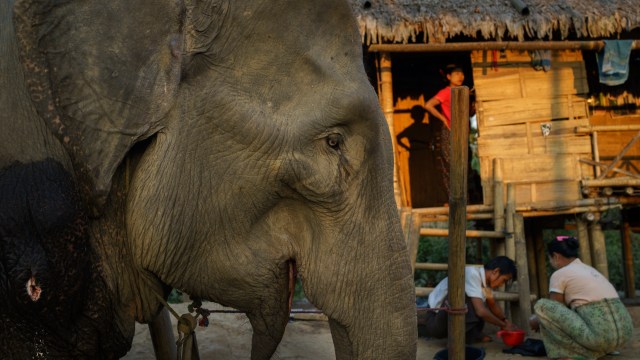What Was It Like When Our Solar System First Formed?
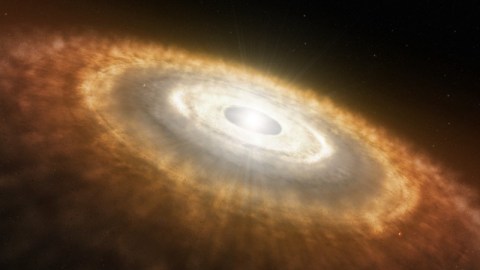
What happened 4.56 billion years ago is the most important part of the cosmic story ever to happen to us.
If you were to look at our Universe at the time our Solar System formed, nothing would look out of the ordinary. The Milky Way would appear relatively isolated: the second-largest member of a relatively small group of galaxies. Small, dwarf galaxies would be seen slowly merging and being acquired by larger ones, just like they would all over the Universe. And throughout the Milky Way, hundreds of billions of stars are already shining, with gas clumps occasionally contracting along its spiral arms to trigger new waves of star-formation. There are tens to hundreds of these regions active in our galaxy at any time.
In one of those regions, 9.2 billion years after the Big Bang, our Sun, planets, and Solar System formed. Here’s what it was like when the Universe made what would become us.
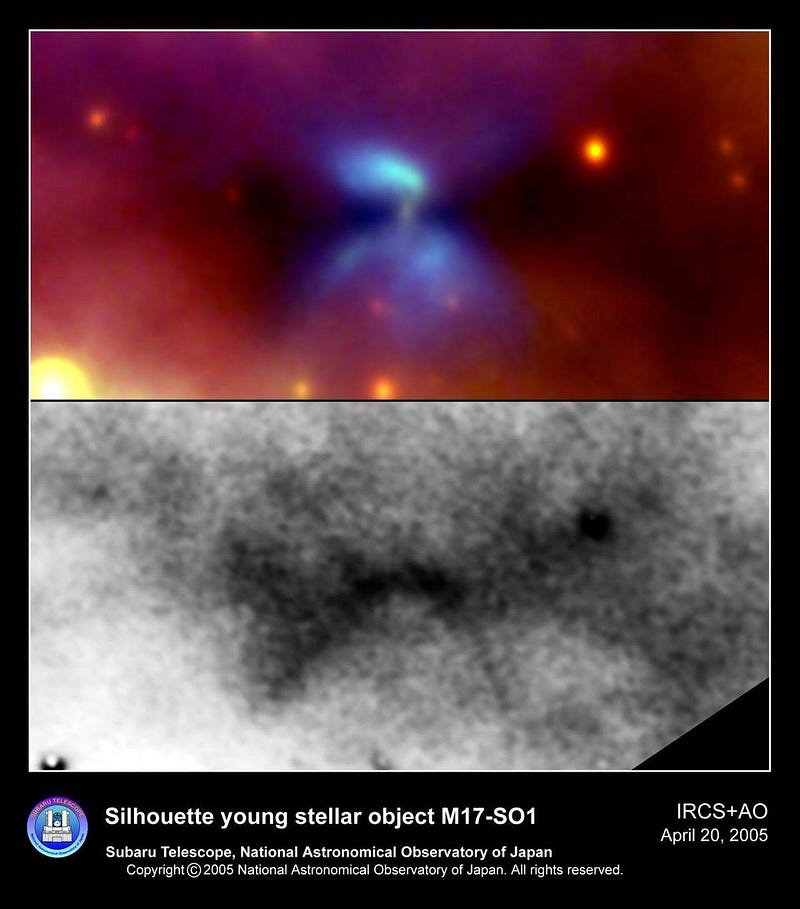
Gas clouds have been contracting to form stars for over 99% of the Universe’s history, but systems like ours weren’t always possible. It took generations of stars living and dying, burning through their fuel, going supernova, blowing off their outer layers, and having white dwarf-white dwarf and neutron star-neutron star collisions occurring to fill our galaxy with the heavy elements we’d later need for life.
It was only with these raw ingredients in place that our Solar System had the potential to give rise to us. But in order for us to exist with the properties that we had, a whole slew of other things had to line up just right.
Spiral galaxies are shaped roughly like a pancake: the gas within them is in a thin disk that’s denser towards the center and less dense at the outskirts. As they rotate, the inner parts spin around a greater number of times than the outer parts; galaxies rotate differentially, rather than like a spinning record.
The heaviest elements preferentially wind up towards the central regions, while the lighter elements wind up at the outskirts. Our Solar System formed from a gas cloud about halfway towards the edge of the disk, about 25,000 light-years from the center, in the central part of the disk if you were to slice it length-wise. When our Solar System first formed, we were made out of about 70% hydrogen and 28% helium, and only about 2% of everything else combined. Still, this represents coming a long way since the Big Bang, where everything was 75% hydrogen, 25% helium, and practically nothing else.
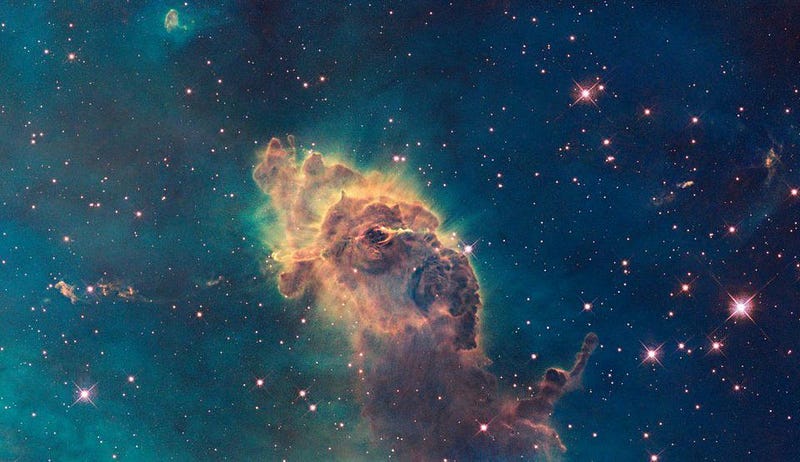
The way most stars form in galaxies like ours — in evolved spiral galaxies that are relatively quiet — is when clouds of gas in the disk pass through one of the spiral arms. Material gets funneled into these clouds, causing it to reach an even greater-than-average density than before, which can often trigger gravitational collapse. When the collapse happens, these clouds of gas, which can range from thousands to millions of times the mass of the Sun, begin to fragment into a myriad of tiny clumps.
The largest clumps to first form begin attracting the most matter, and they grow into the largest stars. Smaller clumps grow more slowly, and clumps that merge together will see their growth accelerate. Inside these star-forming regions, a race begins to occur: between gravity, working to form and grow stars, and radiation, emitted by the hottest stars to newly form.
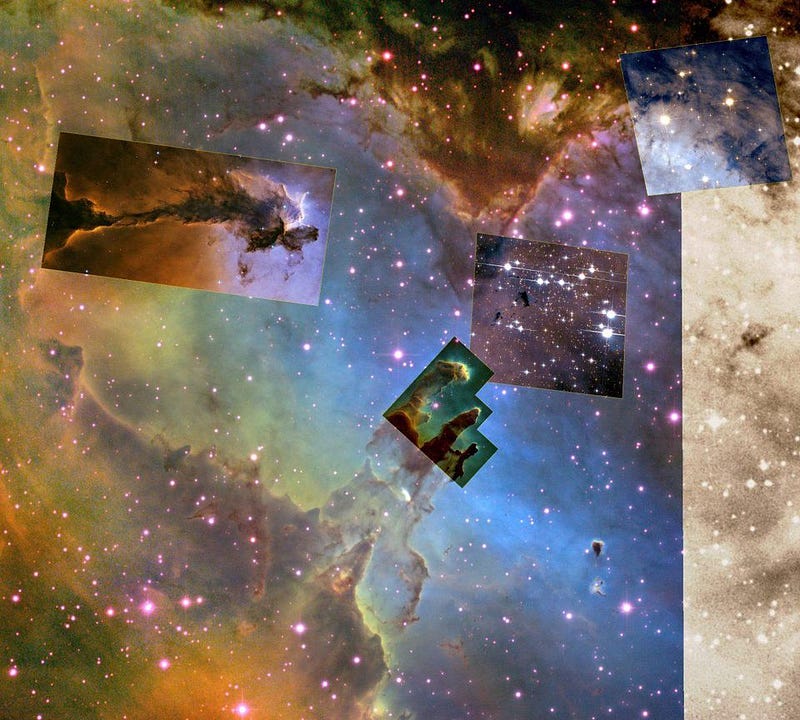
Over time, it becomes clear who the big winners will be: the most massive stars can be tens or even hundreds of times as massive as our Sun, and can give off radiation thousands to millions of times as luminous as our own star. These are the behemoths that will destroy the active star-forming regions by evaporating the gas away.
But gravity is a tenacious competitor. It draws gas into a large variety of regions. While a large, star-forming nebula might form tens or even hundreds of high-mass stars, it’s going to form hundreds of times as many low-mass stars. While the brightest, hottest, bluest stars get all of the attention early on, they’re mere flashes-in-the-pan on a cosmic scales. In a few million years, they’ll all be gone.
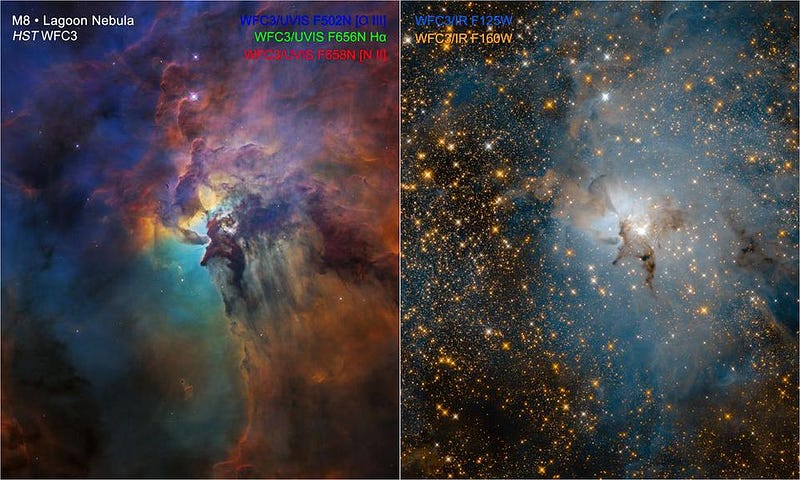
They say that the flame that burns twice as bright burns only half as long, but for stars, it’s even worse than that. A star that’s twice as massive as another burns through its fuel about eight times as quickly. Compared to a star like our Sun, which might last for 10–12 billion years, a star that’s tens or even hundreds of times as massive will live for a few million years at most.
While our early Solar System is still pulling in matter, growing, and working to collapse down to form a central star orbited by planets, the most massive stars around it are furiously burning through their fuel, going supernova, and putting an end to star-formation in the surrounding environments. The Universe is a violent place, and star-forming regions are some of the most violent places of all.
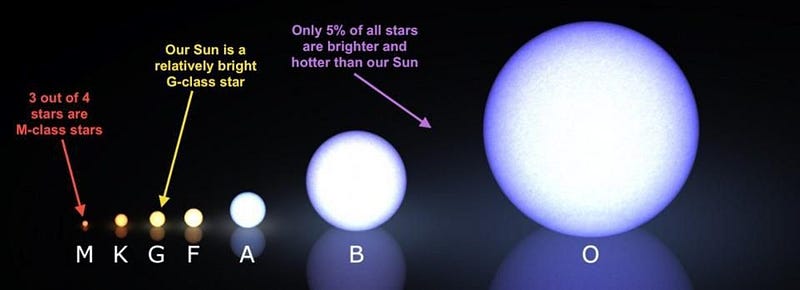
But our Solar System isn’t exactly on the low-end of things, either. The central clump of matter that will grow into our Sun started out larger, earlier, and grew faster than the vast majority of clumps that are present. If we were to take a look at our Sun, today, and compare it to all the other stars in the Universe, here’s a surprising fact about it: it’s more massive than 95% of all the stars out there.
In fact, somewhere between 75% and 80% of all stars are red dwarf (M-class) stars: the lowest-mass, coolest, and smallest class of star out there. Of the rest of the stars, more than half of them are the next class up: K-class, which is still smaller, less massive, and cooler than our Sun. The amount of matter that clumped together to lead to us was above average in terms of mass, and typical in one very important fashion: we were alone.
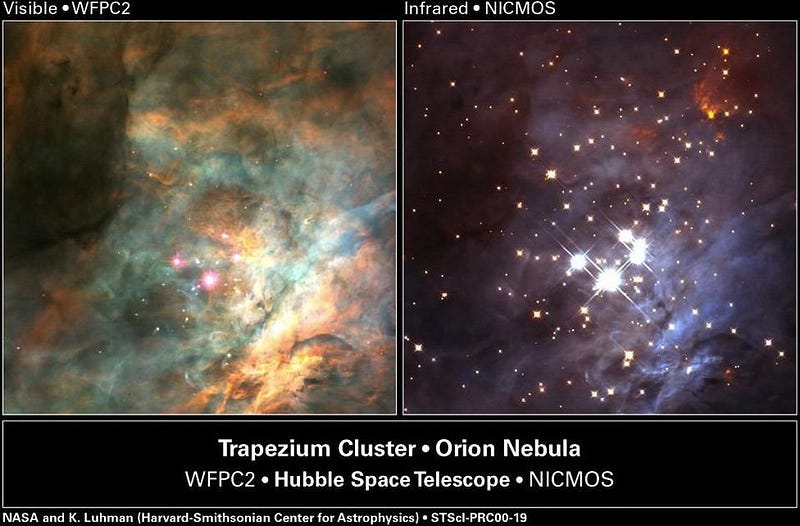
In most of the large star-forming regions we find in Milky Way-sized galaxies, thousands of new stars are born. Of these, many of them will be bound together in multi-star systems, while approximately half of them, total, will be single stars without another stellar companion. We learned this relatively recently, by looking at the nearby stars to Earth, thanks to a collaboration known as RECONS.
The REsearch Consortium On Nearby Stars (RECONS) surveyed all the stars they could find within 25 parsecs (about 81 light-years), and discovered 2,959 stars total. Of those, 1533 were single star systems, but the remaining 1426 were bound into binary, trinary, or even more complex systems.
Why is our Sun a single-star system, rather than a multi-star system? Pure chance.
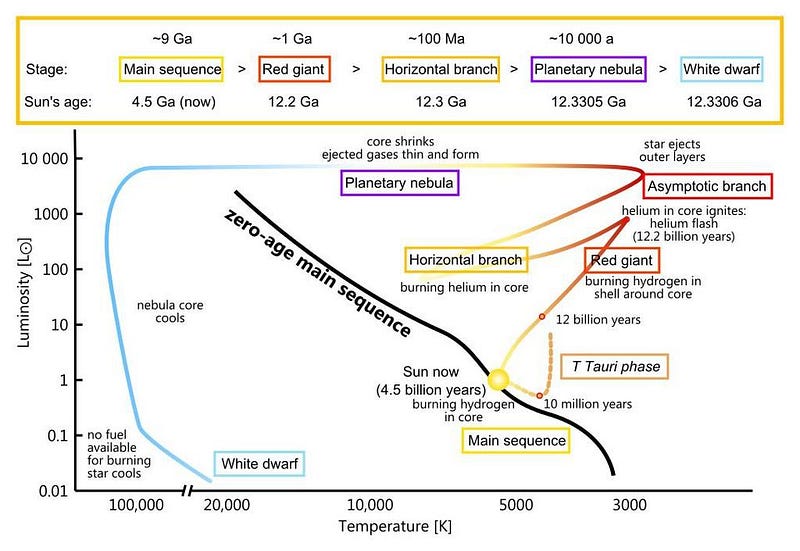
As the years ticked by, the fragment of the gas cloud that turned into our Solar System accrued matter largely onto a central clump. The molecules radiate heat away, allowing this cloud to grow into our Sun, while gravitational collapse simultaneously causes the temperature to rise and rise in the center. At some point, a critical threshold is reached: a temperature of 4 million K, which is the point at which individual protons can begin to fuse into heavier elements through the process of nuclear fusion.
This is the moment that a star is officially considered alive. To the best of our knowledge, this moment happened 4.56 billion years ago, when the Universe was approximately 2/3rds of its current age. At that instant, our Solar System first officially formed.
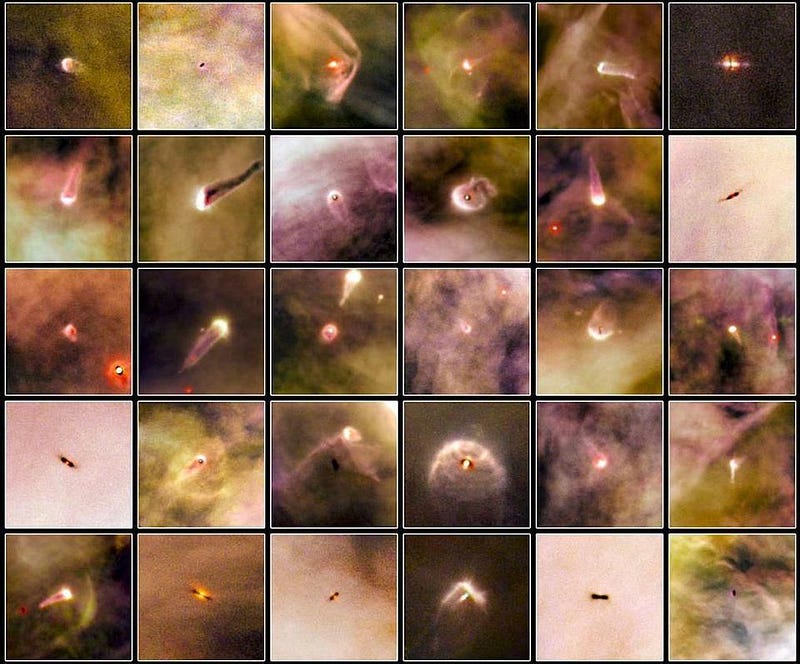
Over the past few years, we’ve finally been able to observe solar systems in these very early stages of formation, finding central stars and proto-stars shrouded by gas, dust, and protoplanetary disks with gaps in them. These are the seeds of what will become giant and rocky planets, leading to full-on solar systems like our own. Although most of the stars that form — including, very likely our own — will have formed amidst thousands of others in massive star clusters, there are a few outliers that form in relative isolation.
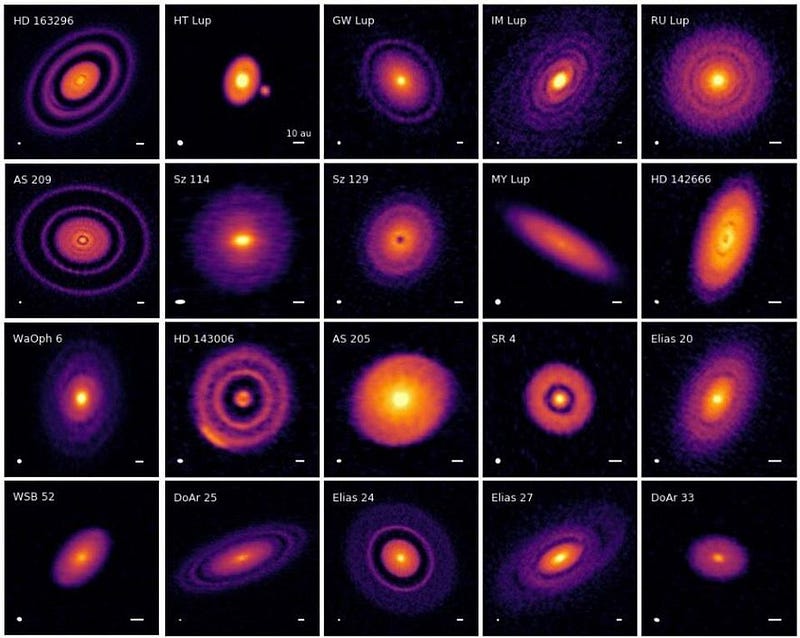
Although the history of the Universe may subsequently separate us from all of our stellar and planetary siblings from the nebula that they formed in billions of years ago, scattering them across the galaxy, our shared history remains. Whenever we find a star with approximately the same age and abundance of heavy elements as our Sun, we cannot help but wonder: is this one of our long-lost siblings? The galaxy is likely full of them.
Further reading on what the Universe was like when:
- What was it like when the Universe was inflating?
- What was it like when the Big Bang first began?
- What was it like when the Universe was at its hottest?
- What was it like when the Universe first created more matter than antimatter?
- What was it like when the Higgs gave mass to the Universe?
- What was it like when we first made protons and neutrons?
- What was it like when we lost the last of our antimatter?
- What was it like when the Universe made its first elements?
- What was it like when the Universe first made atoms?
- What was it like when there were no stars in the Universe?
- What was it like when the first stars began illuminating the Universe?
- What was it like when the first stars died?
- What was it like when the Universe made its second generation of stars?
- What was it like when the Universe made the very first galaxies?
- What was it like when starlight first broke through the Universe’s neutral atoms?
- What was it like when the first supermassive black holes formed?
- What was it like when life in the Universe first became possible?
- What was it like when galaxies formed the greatest numbers of stars?
- What was it like when the first habitable planets formed?
- What was it like when the cosmic web took shape?
- What was it like when the Milky Way took shape?
- What was it like when dark energy first took over the Universe?





